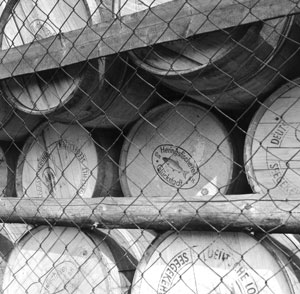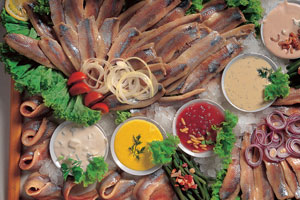Lugger fishing in Glückstadt – How it all started

Herring barrels
The tradition of lugger fishing (for herring) in Glückstadt dates way back: from 1893, herring luggers sailed from Glückstadt and produced the original “Glückstadt Matjes”. On lugger boats, the men from the town used to go out to sea to hunt the little fish.
Slaughtered and salted on board of the vessels, it was originally regarded as a poor man’s food. Over time, though, it became a culinary treat that takes pride of place on every menu in town.
Since the end of herring fishing in Glückstadt in 1976, the fish has been mainly imported from Denmark and Norway. But the tradition lives on. The original “Glückstadt Matjes” is still processed by hand and prepared according to the traditional recipe by two Matjes producers: Plotz Spezialitäten and Raumann Matjes.
Original Glückstadt Matjes – The tradition lives on
The citizens of Glückstadt are a proud folk who do not bend the knee easily. But for centuries, the small herring has managed to play a vital role in our town. Although this little fish has to pay the ultimate price for it every year, it is an integral part of Glückstadt’s culinary tradition.
The herring is only allowed to be called original “Glückstadt Matjes”, though, if it meets certain requirements: when caught, the fish needs to be younger than five years; this way, only the most tender meat is served. However, it must not be caught at too young an age: the herring needs to be allowed to spawn at least once to guarantee sustainability and to avoid overfishing.

But the herring is still only a herring and not yet a Matjes. On board the ships it is frozen and brought to Glückstadt. This is the start of a long but necessary procedure to turn the herring into Matjes. In a first step, the fish is professionally cut, gutted and salted. Then the herrings are ripened for a couple of days in oak barrels in a salty solution. The pancreatic enzymes which support the ripening make this version of herring especially mild and soft and give it its typical flavour. In a last step, this soon-to-be-Matjes is then stripped of bones and skin by hand. At the end of the lengthy procedure, buyers are presented with two nice and clean Matjes fillets.




